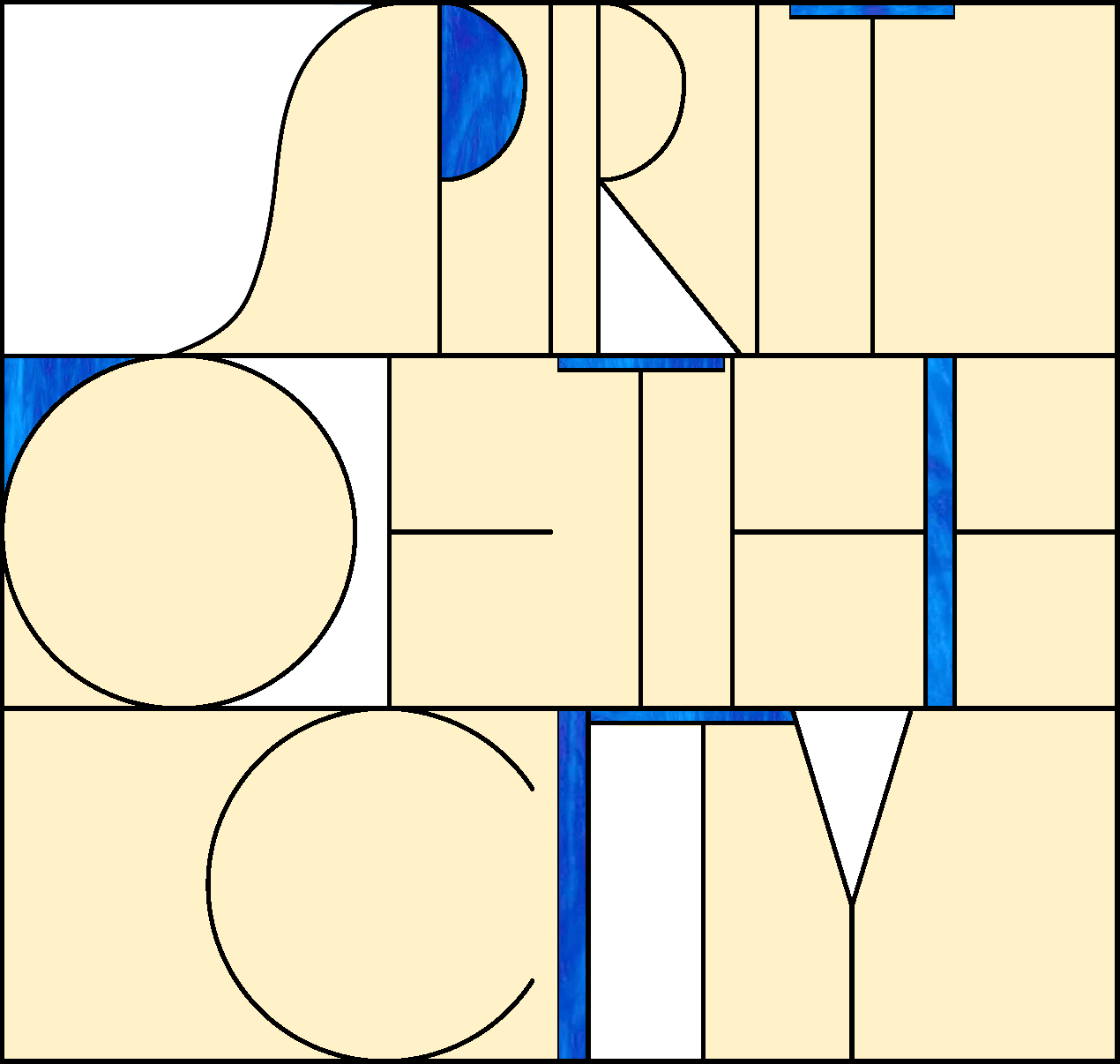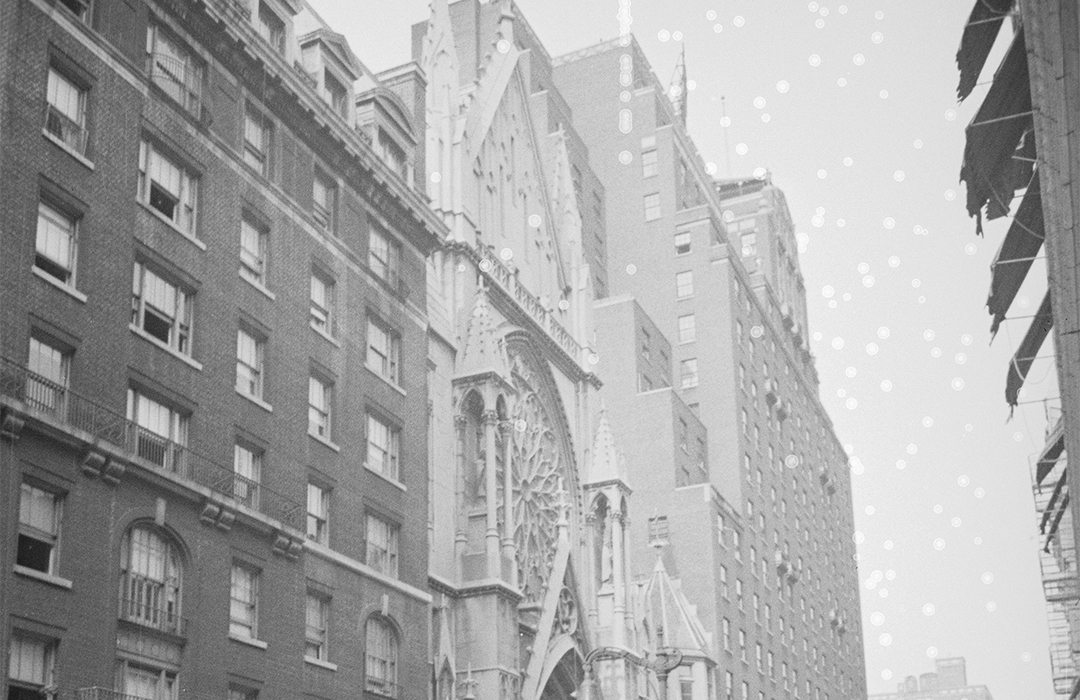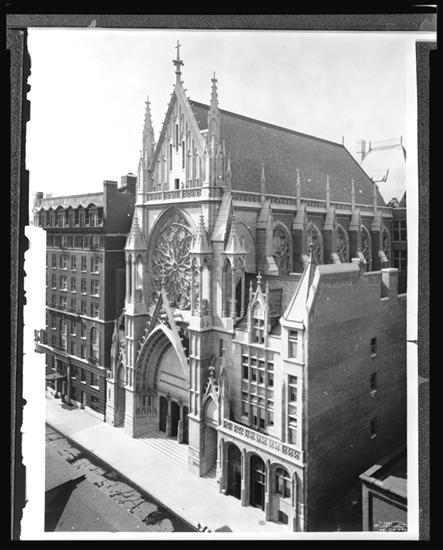152 West 71st Street

The Church of the Blessed Sacrament
152 West 71st Street
by Tom Miller
The Upper West Side of Manhattan, by 1914, had changed from a sparsely-populated rural area to one bursting with grand apartment buildings on the avenues and commodious row houses on the streets. The lovely Roman Catholic Church of the Blessed Sacrament which opened its doors in 1888 was no longer large enough to contain its burgeoning congregation.
The young architect Gustave E. Steinback was given the commission to design a new edifice. Drawing on 13th Century French Gothic styles – particularly Louis IX’s Sainte Chapelle on the Ile de la Cite in Paris – the architect produced a lofty stone structure dominated by an enormous rose window over the main entrance. Steinback, in the Gothic tradition, embellished the exterior with lavish sculpture and carvings.
The young architect Gustave E. Steinback was given the commission to design a new edifice.
The church was completed late in 1920 at a cost of $600,000. It was the interior that most impressed the critics. The 1920 issue of Architecture and Building said, “There is a very practical side to the interior finishing of this church. While its color effects are soft and pleasing to the eye, the finishing material serves another purpose in that it has acoustic properties, being designed to partial [sic] absorb sound and to prevent echo and reverberations.”
Steinback used three shades of material to “prevent monotony to the eye.” The patterned tile floor, executed by D. H. McLawry Tile Company, ran uninterrupted throughout. But it was Clement Heaton’s stained glass windows that stood out.
Architecture and Building remarked, “The natural lighting of the church is soft and subdued due to the beautiful ornamental glass windows…The rose window is a particularly striking piece of ornamentation, occupying the large vaulted space over the organ loft. The beautiful tracery of the design is featured in the exterior.”
While it adhered to medieval traditions in style, the church did not ignore the conveniences of the 20th Century. A vacuum cleaner system was installed by the Allen & Millmyre Company, an amenity not found in Sainte Chapelle!
While it adhered to medieval traditions in style, the church did not ignore the conveniences of the 20th Century.
The church attracted a wide variety of parishioners. Here on August 29, 1928, the church was packed with Broadway notables for the funeral of George M. Cohan’s mother, Mrs. Jere Cohan. Two years later, on November 16, a high requiem mass was celebrated for former Supreme Justice William P. Burr. Over 300 mourners, many of them well-known jurists, attended the mass during a downpour of rain.
On February 14, 1922, it was announced in The New York Times that the old church property, which had been on the market for $1 million, had been sold “as a site for a tall apartment house.” It signaled the rise of high neighboring buildings, which would all but suffocate the architecture of Blessed Sacrament.
Today the scale of the Gothic church is diminished by the structures around it – however, the beauty of its architecture and its exquisite interior remains unchanged.
Tom Miller is a social historian and blogger at daytoninmanhattan.blogspot.com



